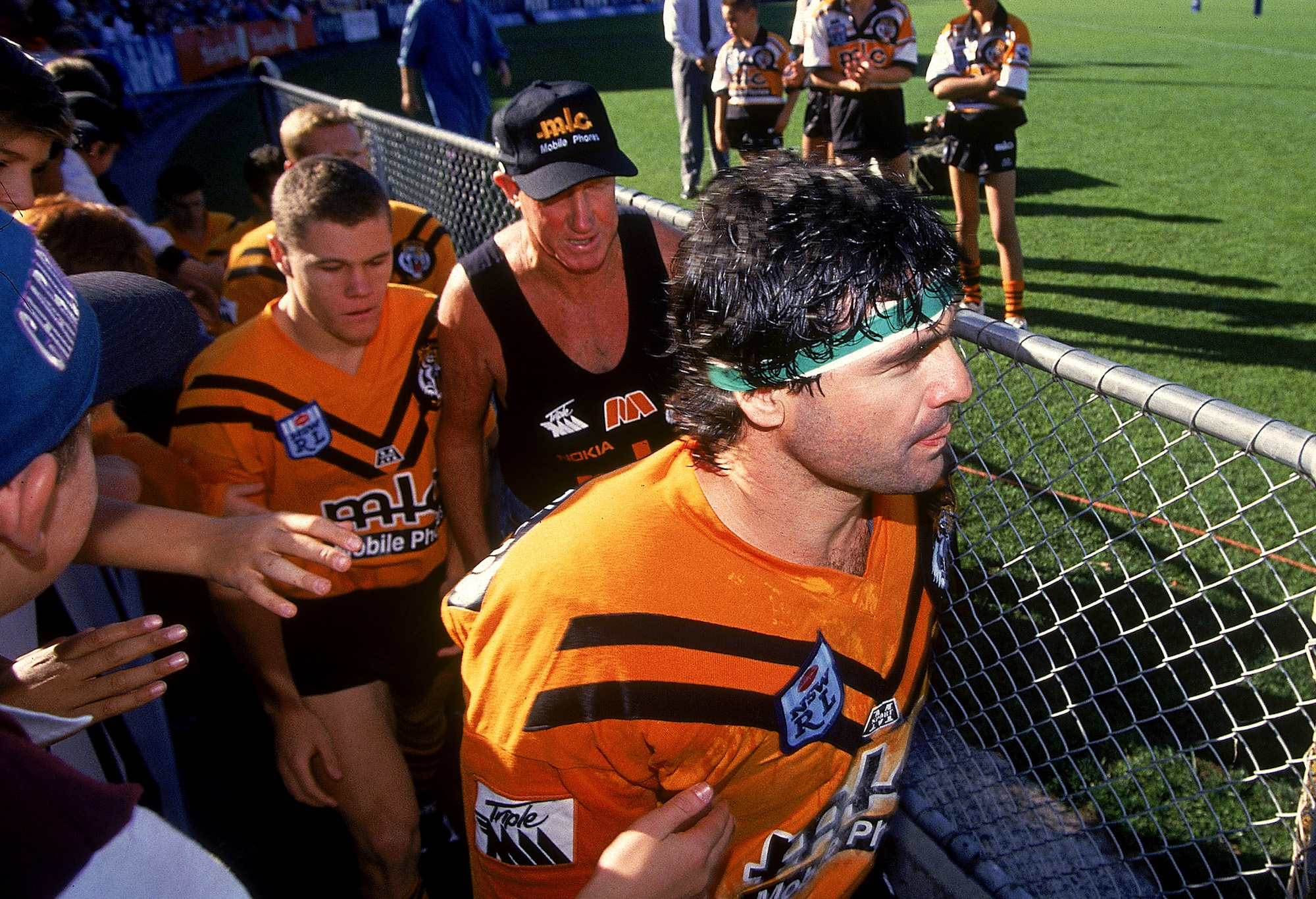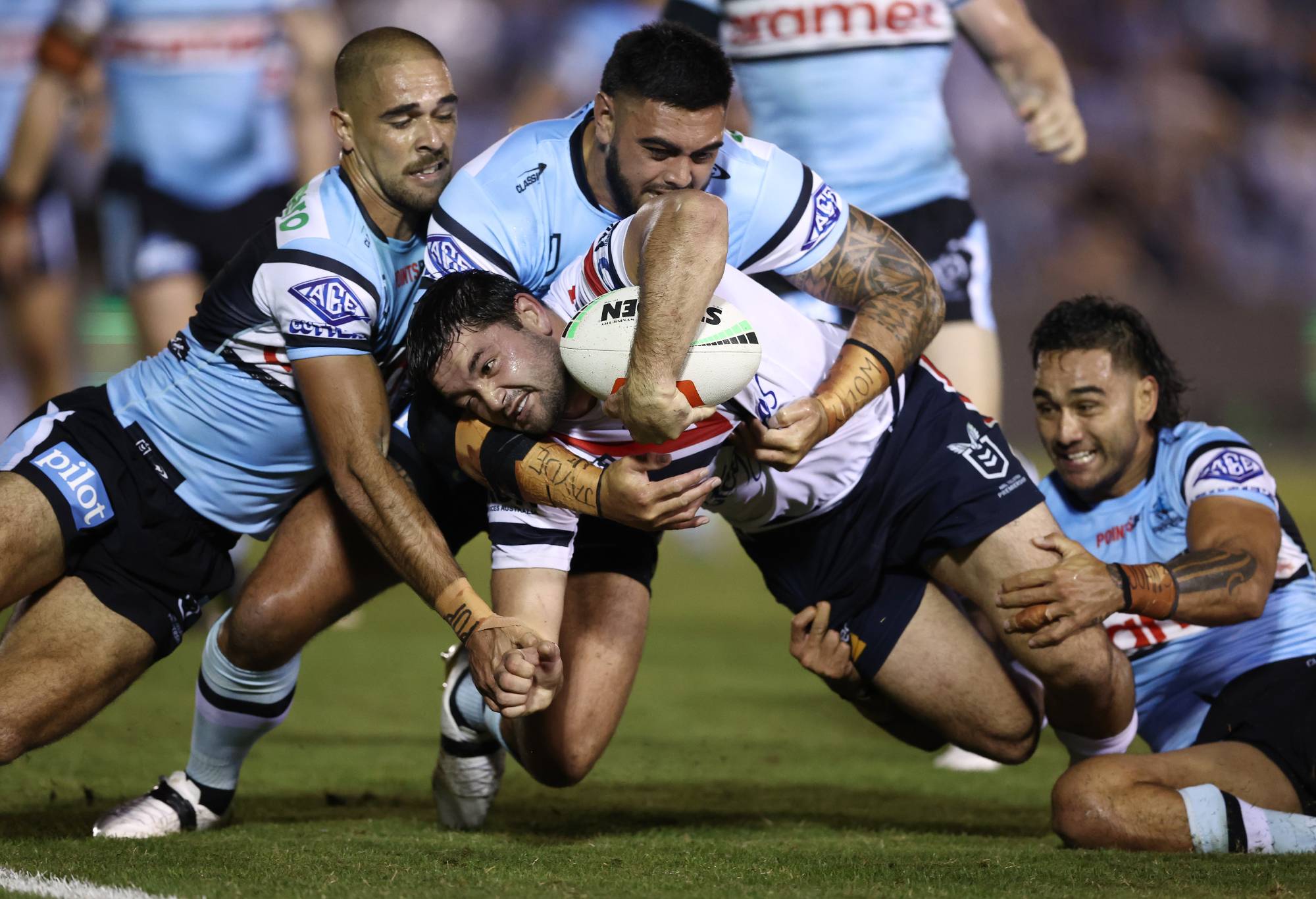The hooker in rugby league evolved from someone who lived up to their names by hooking the ball back in scrums to becoming a creative force.
They had little skill and plenty of toughness back when scrums were a contest when dinosaurs roamed a Sydney suburban premiership sponsored by cigarette companies.
And then they became attacking weapons, crafty operators who became dummy-halves in more than name only.
Like him or love him but Benny Elias was the original game-changer on that front.
His ball-playing skills for Balmain, NSW and Australia in the 1980s was like nothing before seen from a hooker.

Balmain legend Benny Elias. (Photo by Getty Images)
Someone who could not only make a break on his own from a quick play-the-ball but an on-field general who could organise the attack on either side of the field.
His flair enabled Warren Ryan to form a potent Tigers outfit with energetic but not especially skilful halves like Gary Freeman and Michael Neil which would have won a premiership if not for an Elias field goal attempt which banged away off the crossbar.
Elias’ nemesis both in club and state rivalry as they squared off for the Australian jersey was Canberra’s traditional hooker Steve Walters, who was more of a throwback to the previous generations of rakes who was tough as the Queensland sun and played more like a second back-rower than another halfback.
The torch from Elias passed on to Danny Buderus, who was a converted halfback who couldn’t get a start in his preferred position at Newcastle because of the presence of a future Immortal in Andrew Johns.
Buderus transferred his playmaking skills to the hooker role and, combined with a tireless work ethic and classical tackling technique, became the 21st century prototype for dynamic dummy-half play.
Converted halves in the No.9 jersey became widespread with the likes of Craig Wing, Craig Gower, PJ Marsh and Shaun Berrigan thriving at club and representative level after being “promoted” into the engine room.
And of course the evolution of the hooker made a revolutionary leap soon after Cameron Smith came along in 2003.
Another hooker who had learned his trade as a halfback, he was the complete player in terms of attack, organisation, defence, leadership and even goal-kicking.
Although he holds many of the NRL’s endurance records like matches played, his greatness was in the way he held sway over every aspect of the game.
Other hookers followed suit in style and even though none of them could hold a candle to Smith for all-round dominance, the likes of Michael Ennis, Robbie Farah and Issac Luke were jack of all trades style hookers who were extremely valuable to whichever team they were in.

Knights great Danny Buderus. (Photo by Tony Feder/Getty Images)
But over the past few years, the role of the hooker has regressed to little more than a player who is asked to tackle themselves to a standstill in the middle of the ruck and play just a bit part in attack, usually confined to firing a pass left or right to whichever playmaker makes the loudest call for the pill.
Apart from Melbourne skipper Harry Grant, Wests Tigers captain Api Koroisau and Jeremy Marshall-King at the Dolphins, the rest of the No.9s running around are pretty much doing just that – running around, tackle for a set, pass for a set, then repeat.
The likes of Mitch Kenny, Reed Mahoney, Lachlan Croker, Jayden and Blayke Brailey, Billy Walters and Wayde Egan fill an important role by shoring up the middle of the ruck and playing long minutes but when it comes to setting up line breaks, they take a back seat to the other three members of their team’s spine.
Even a player like Damien Cook who was renowned for being an attacking dynamo, has been relegated to a tertiary role focused more on defence at Souths, although that may also be a factor of the 32-year-old’s legs not moving quite as quickly as they did across the Helensburgh sands (fun fact, apparently he was once a beach sprinter).
One of the contributing factors to the hooker’s slide in attacking emphasis could be due to coaches wanting them to play the full 80 minutes wherever possible.
If you scan the 16 squads chosen for Round 3 you will see only a handful of genuine hookers on the interchange lists with most coaches rolling with a utility type who will only be thrown into dummy-half if injury strikes.
Hookers seem to be saving their energy in attack for the mountainous defensive work they have to get through across the entire game. Or perhaps more to the point it’s hard to spark a break up the middle when your legs are just as tired as everyone else’s on the field.

(Photo by Matt King/Getty Images)
This could be called Brandon Smith syndrome. When he played at the Storm, he would wreak havoc when Craig Bellamy would throw him into the fray midway through the first half to replace Harry Grant or to play as an extra middle forward who would dip in and out of hooker when Cameron Smith was still on the field.
Since he’s been at the Roosters, his attacking impact has been negligible – just three tries and two assists in 23 matches, with his average running metres little more than half what he’d produce at the Storm.
His running game a pass or two off the ruck was one of his great strengths but when he’s the one collecting at the play-the-ball, he cannot seem to generate the momentum to break tackles.
It is unfair to compare him or any of the current hookers to Cameron Smith and evolution is not a linear process but the dummy-half role is definitely becoming more basic than what it was just a few years ago.































































































